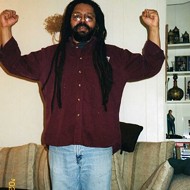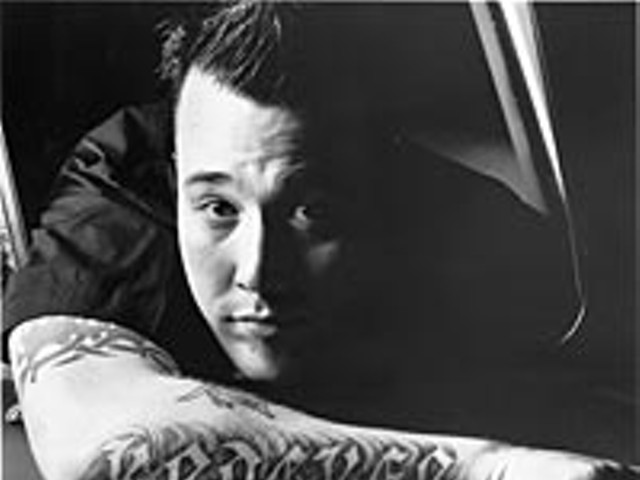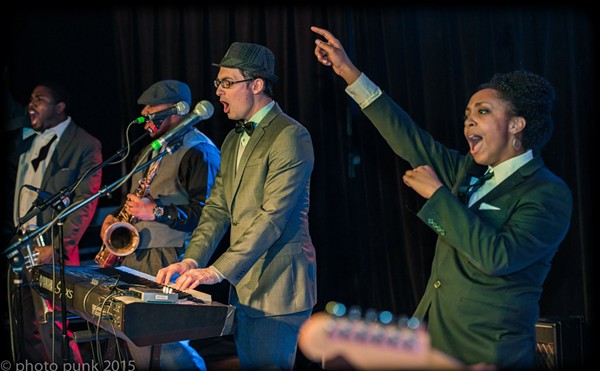Talk about sowing your wild oats.
Louis Armstrong, the seminal jazz instrumentalist, vocalist and composer, lifted his trumpet and spread seed across the world throughout his career — and beyond. Sixteen years after his death in 1971, “What a Wonderful World” became a major hit all over again after its inclusion on the sound track to Good Morning, Vietnam. The elegant, straightforward lyricism of that song struck hearts and minds everywhere. It was recorded in 1968, when Armstrong’s later years produced a sincere, transcendent clarity that was always dead-on.
“When I went to Jordan with the Michigan Jazz Masters, the prince came that night and that was what he wanted to hear, ‘What a Wonderful World,’” recalls trumpeter Marcus Belgrave. “The prince started crying, and everybody else started crying. I felt like Louis was there. Like he was singing it through me. … I cannot ever exclude that from any program I ever do.”
Belgrave has dedicated much of the past year to performing Armstrong’s music in a tribute marking the centennial of the elder musician’s birth. Although Pops, as Armstrong was affectionately known, often claimed to have been born on July 4, 1900, jazz writer Gary Giddins in his book Satchmo produces a baptismal certificate that shows a birth date of August 4, 1901.
But again, claiming the red-white-and-blue holiday as a birthday is tribute to Armstrong’s genius as a showman. What better date for the man who ushered American music into the modern age, who announced it with a brass blast that was a clarion call to the world?
And what other musician of any genre managed to revolutionize music at the outset of his career and six decades later have a major pop hit? Accordingly, most of Belgrave’s program is focused on Armstrong’s revolutionary works of the 1920s — the recordings by his Hot Five and Hot Seven bands — but as he says, you can’t exclude “What a Wonderful World.”
This year, the celebration of Armstrong’s birth includes everything from concerts to documentary film to reissues of his music. He was the central figure in Ken Burns’ 10-part series, “Jazz,” that aired earlier this year on public television. The impression is that Armstrong was a multimedia star before the concept was invented. He cut across barriers as a writer, an actor in stage plays and in more than 50 films. He did the same as a pop star, refining the role of entertainer to a level that at times eclipsed his redefinition of the jazz artist as virtuoso improviser. In these days when every other musician who makes a video thinks he’s an actor, Armstrong’s accomplishments still tower over any of them.
“To me, even though we had other trumpeters that came before him — Bunk Johnson, Joe Oliver, Manuel Perez — Louis was the first guy to open the door and be a jazz ambassador,” says New Orleans-born clarinetist Charlie Gabriel, who performs the tribute with Belgrave. “He was just a natural . … He had a great personality and helped this music go all over the world.”
Even though Armstrong was seen and known by millions, we’re still finding out more about him. His private side has become more public with more than 650 reels of spoken-word tapes housed at the Louis Armstrong Foundation in Flushing, N.Y., which are now getting exposure. Personally recorded by the jazz master at home and on the road, the tapes add another layer of complexity to the man who lived so much of his life in the public eye. Rancorous comments about figures such as Joe “King” Oliver, Josephine Baker and Marcus Garvey, as well as his sentiments on racism in America, much of it rendered with a vocabulary as salty as a Richard Pryor routine, show that the ever-smiling entertainer had a side few glimpsed.
Armstrong’s beginning was inauspicious. His mother was a prostitute, and his father abandoned the family when Armstrong was still a baby. He lived in a crime-ridden part of New Orleans, an environment that could have overwhelmed and destroyed a lesser person. Yet this life among the underclass ultimately made Armstrong the man he became.
He sang on corners, and at age 12 was sent to reform school for shooting a gun into the air. There he encountered the bugle, and then the cornet and trumpet that would lead him to worldwide renown. By age 16 he was supplementing his day laborer’s income with music jobs. And he was being tutored by King Oliver, whom he eventually replaced in Kid Ory’s band after the older man headed north to Chicago.
He worked Mississippi riverboats with Fate Marable, but he has said his style really blossomed after he rejoined Oliver in Chicago in 1922. That blossoming was apparent to Lil Hardin, the band’s pianist who later married Armstrong and coaxed him to strike out on his own. After stints with Fletcher Henderson and Clarence Williams in New York, and seminal recordings with Bessie Smith and other blues singers, Armstrong returned to Chicago.
Then the most important performances of modern jazz were recorded by studio bands never known to have performed live. The Hot Five and Hot Seven records made from 1924 to 1928 clearly established jazz as art, and defined the jazz artist as a virtuoso improviser.
“It was so well-orchestrated,” says Belgrave. “Although there was a lot of improvisation, it was orchestrated so it was like a small symphonette. Just listening to how the trombone and clarinet complement the melody, it was orchestrated very well. He was not first to do that, but he took it to another level, and his personality made it so dominant.”
Those recordings often broke the band down to duos and trios to really show what musicians could do. Before this, jazz was more often collectively improvised; individual soloists had to make their mark within the ensemble. And the whole thing was built around Armstrong’s impeccable, unequaled swing.
“This material represents one of the more fertile periods of Armstrong’s career,” says Don Lucoff, spokesperson for Columbia-Legacy which released the Hot Five and Hot Seven recordings on CD this year. “There was this genius at work. ‘West End Blues’ is considered Armstrong’s most definitive piece of music.”
There are many defining moments on those recordings. On “Heebie Jeebies,” the Hot Five’s first hit, Armstrong puts scat singing on the map. “Cornet Chop Suey” features a stop-time chorus in which the trumpeter shows how to use variations on a riff to create a new and compelling melody. But it is “Swing That Music” that’s the real instrumental challenge.
“He hit that high “C” 51 or 52 times,” says Belgrave. “He hit it on the head and never missed one through two choruses. Each time that he did, it was a different rhythm. … I love attempting it.”
So as jazz swings into its second century, we look back to its beginning in the person of Louis Armstrong. His seeds have taken root and flourish in every imaginable context. He rubbed elbows with royalty and street people. His music sounds simple and straightforward, yet it is so complex that it challenges today’s best musicians. Someone like him can only come along once in a very lucky century.
Marcus Belgrave & The Detroit All Stars
Tribute to Louis Armstrong
Monday, Sept. 3, 7:45 p.m.
Ford Motor Company Amphitheatre Stage
Hart Plaza, free






